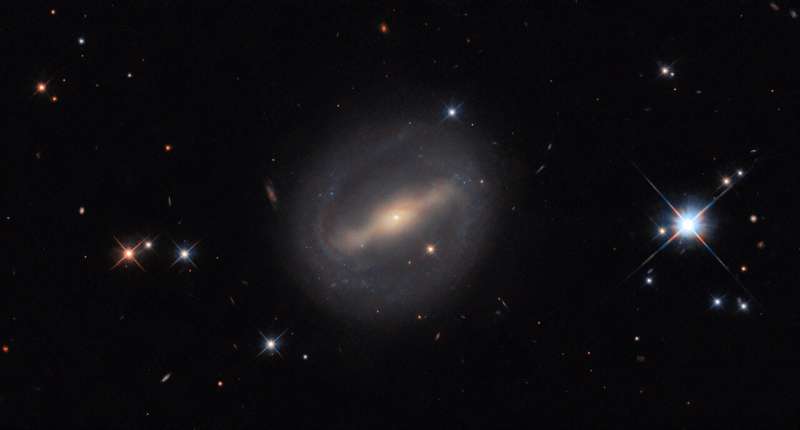This article has been reviewed according to Science X's editorial process and policies. Editors have highlighted the following attributes while ensuring the content's credibility:
fact-checked
trusted source
proofread
Hubble rings in a new galactic view

The subject of this NASA/ESA Hubble Space Telescope image is situated in the Perseus Cluster, also known as Abell 426, 320 million light-years from Earth. It's a barred spiral galaxy known as MCG+07-07-072, seen here among a number of photobombing stars that are much closer to Earth than it is.
MCG+07-07-072 has quite an unusual shape for a spiral galaxy, with thin arms emerging from the ends of its barred core to draw a near-circle around its disk. It is classified as an SBc(r) galaxy: the c denotes that its two spiral arms are loosely wound, each only performing a half-turn around the galaxy, and the (r) is for the ring-like structure they create.
Rings in galaxies come in quite a few forms, from merely uncommon, to rare and scientifically important. Lenticular galaxies are a type that sit between elliptical and spiral galaxies. They feature a large disk, unlike an elliptical galaxy, but lack any spiral arms. Lenticular means lens-shaped, and these galaxies often feature ring-like shapes in their disks.
Meanwhile, the classification of "ring galaxy" is reserved for peculiar galaxies with a round ring of gas and star formation, much like spiral arms look, but completely disconnected from the galactic nucleus—or even without any visible nucleus. They're thought to be formed in galactic collisions.
Finally, there are the famous gravitational lenses, where the ring is in fact a distorted image of a distant, background galaxy, formed by the "lens" galaxy bending light around it. Ring-shaped images, called Einstein rings, only form when the lensing and imaged galaxies are perfectly aligned.
Provided by NASA





















